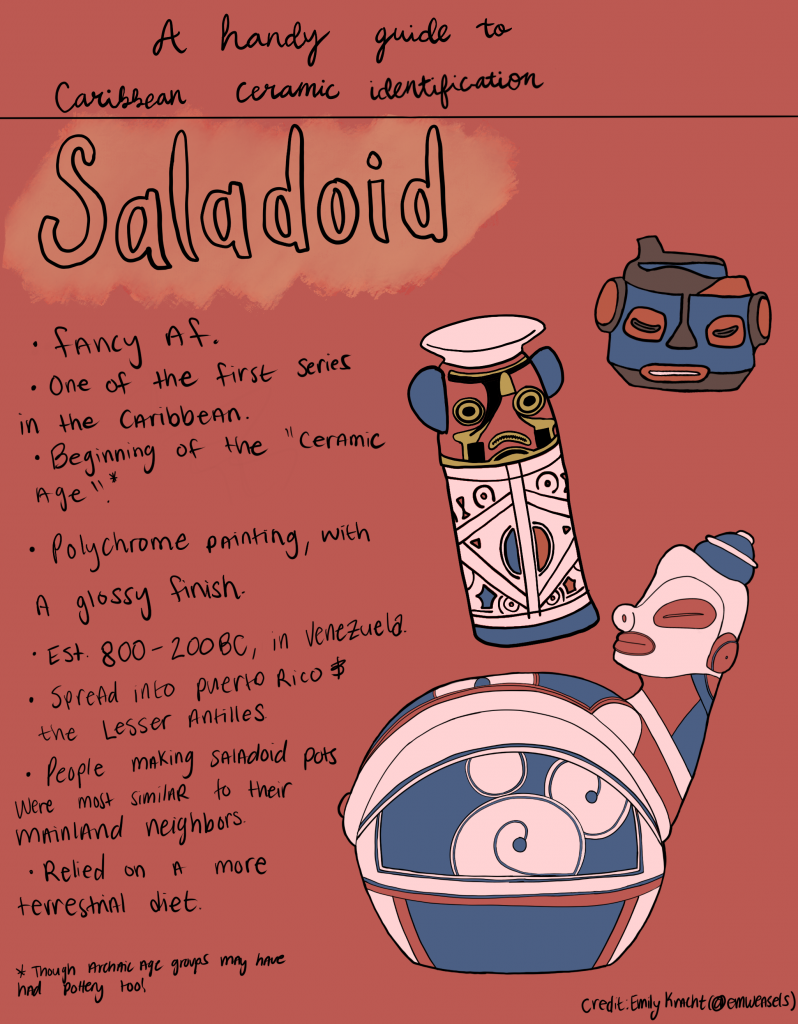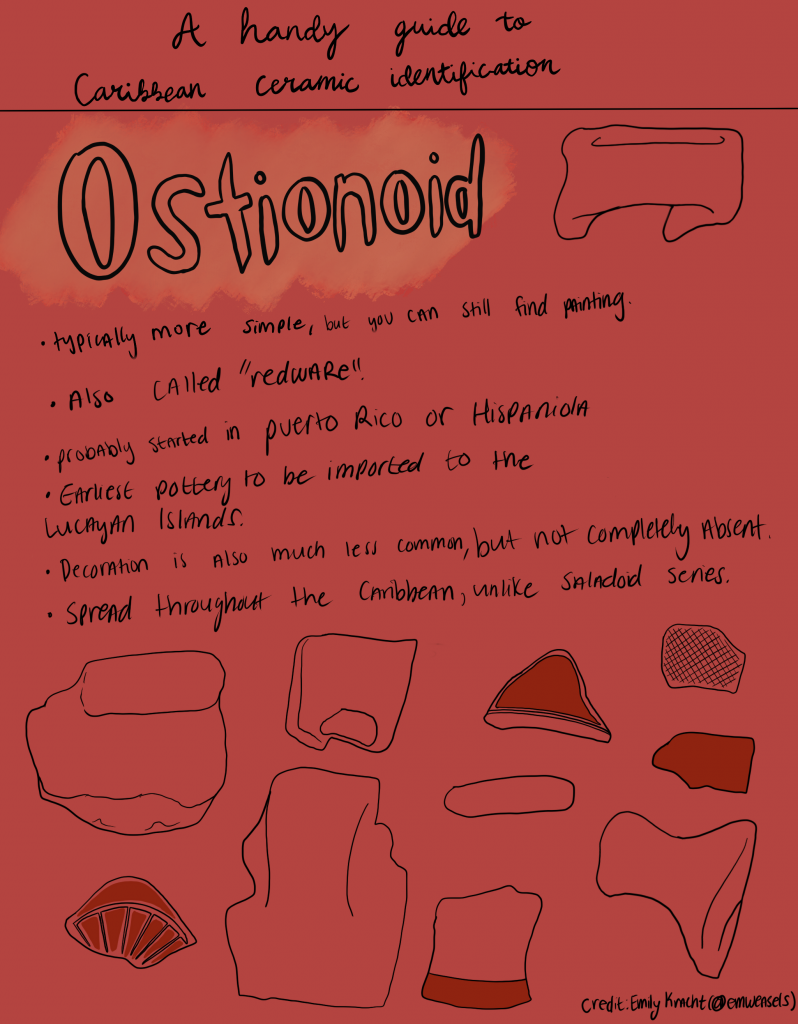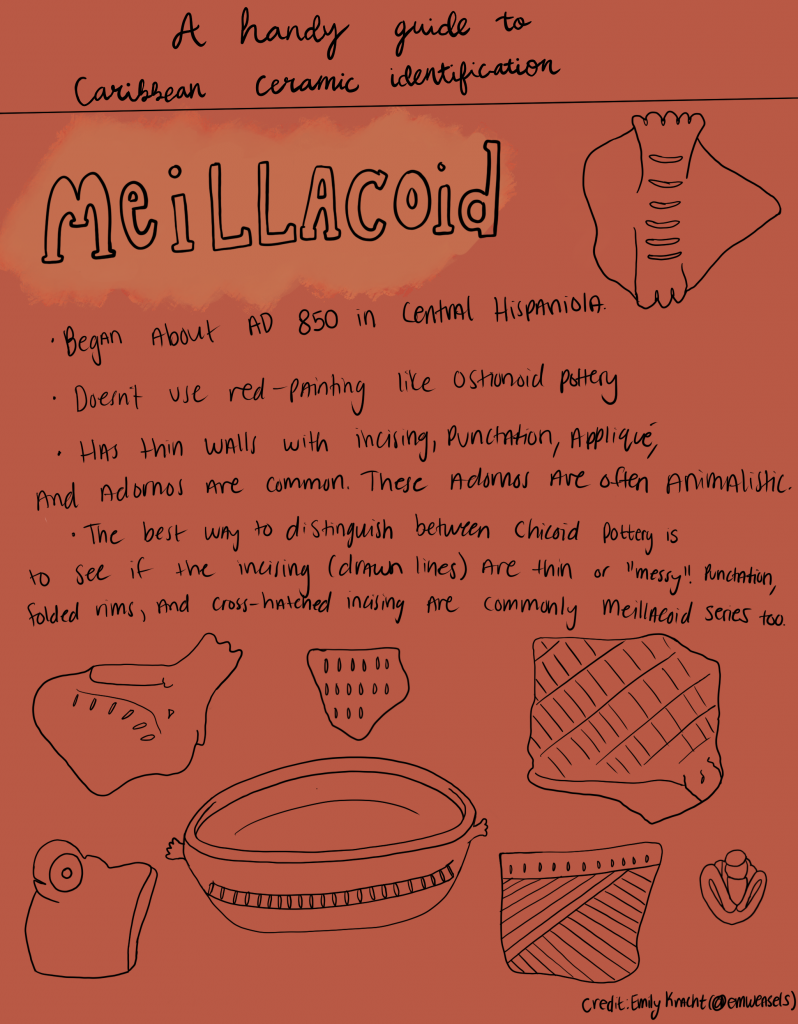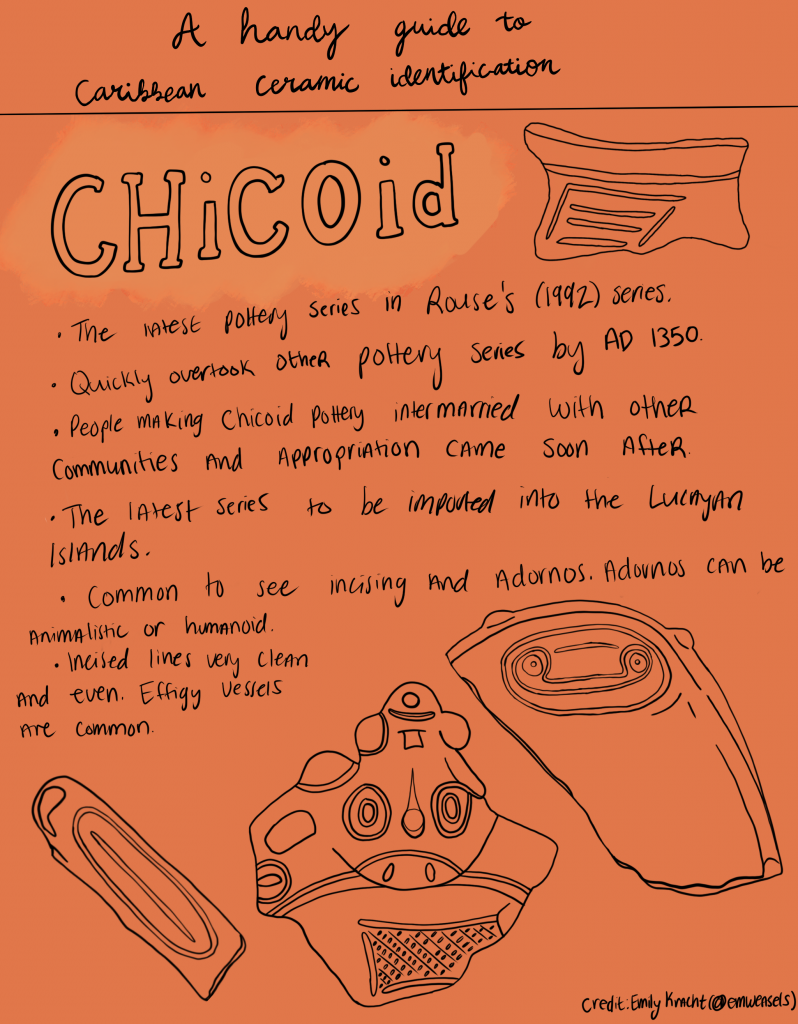Learn the difference between the common ceramic series of the Caribbean (Rouse 1992) with these cheat sheets from Collections Assistant Emily Kracht:
A handy guide to Caribbean ceramic identification: Saladoid
- Fancy af
- One of the first series in the Caribbean
- Beginning of the “Ceramic Age”*
- Polychrome painting, with a glossy finish
- Est. 800-200 BC, in Venezuela
- Spread into Puerto Rico & the Lesser Antilles
- People making Saladoid pots were most similar to their mainland neighbors
- Relied on a more terrestrial diet.
*Though Archaic age groups may have had pottery too!
A handy guide to Caribbean ceramic identification: Ostionoid
- Typically more simple, but you can still find painting
- Also called “redware”
- Probably started in Puerto Rico or Hispaniola
- Earliest pottery to be imported to the Lucayan Islands
- Decoration is also much less common, but not completely absent
- Spread throughout the Caribbean, unlike Saladoid series
A handy guide to Caribbean ceramic identification: Meillacoid
- Began about AD 850 in Central Hispaniola
- Doesn’t use red-painting like Ostionoid pottery
- Has thin walls with incising, punctation, appliqué, and adornos are common. These adornos are often animalistic
- The best way to distinguish between Chicoid is to see if the incising (drawn lines) are thin or “messy”. Punctation, folded rims, and cross-hatched incising are commonly Meillacoid series too
A handy guide to Caribbean ceramic identification: Chicoid
- The latest pottery series in Rouse’s (1992) series
- Quickly overtook other pottery series by AD 1350
- People making Chicoid pottery intermarried with other communities and appropriation came soon after
- The latest series to be imported into the Lucayan Islands
- Common to see incising and adornos. Adornos can be animalistic or humanoid
- Incised lines very clean and even. Effigy vessels are common
For more information, see:
Rouse, Irving
1992 The Tainos: Rise and Decline of the People who Greeted Columbus. Yale University Press, New Haven.



